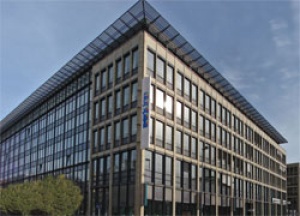Rezidor signs & opens the Park Inn Dresden, Germany

The Rezidor Hotel Group, one of the fastest growing hotel companies worldwide, announces the signing and opening of the Park Inn Dresden, Germany. The 132 rooms-property, a former Tulip Inn, will be bookable in Rezidor’s reservation system by end of March.
“This hotel is our third property in Dresden and further strengthens our presence on the local and regional market. We are delighted to once again cooperate with our partner Provent Hotels which belongs to our most important franchisees in Germany”, comments Kurt Ritter, President & CEO of Rezidor. Provent already manages the Park Inn hotels Cologne City-West, Berlin City-West, Papenburg and Heppenheim. “We are glad to open another Park Inn Hotel in the beautiful and interesting city Dresden with prospects of the business and leisure segment” announces Michael Lachmann, Managing Director of Provent.
The Park Inn Dresden is situated in Dresden Neustadt near the bank of the river Elbe, only 15 minutes on foot away from the historic town centre. The Ministry of Finance of Saxony, the town hall and the government seat of Saxony are in vicinity – as well as Dresden’s most famous sights such as Semperoper, Zwinger and Frauenkirche. Besides 132 guest rooms and suites the property features a restaurant, a lobby bar and a meeting room. It was originally opened in 1997 and fully renovated in 2007.
Park Inn is Rezidor’s young and dynamic mid market brand. Launched in early 2003 only, Park Inn today comprises more than 135 hotels with a total of over 25,500 rooms in operation and under development across Europe, Middle East and Africa. The brand with its colourful and modern identity in blue, green, red and yellow prides itself on “mastering the essentials” delivering a great affordable hotel experience within its class.
Dresden is the capital of Saxony, located 170 km south-east of Berlin. It has a long history as the capital and royal residence for the Electors and Kings of Saxony, who brought with them the cultural and artistic splendour that the city’s silhouette is famous for. It was then called the “Florence of the North”. The city was completely destroyed by the controversial Allied aerial bombing towards the end of World War II. The impact of the bombing and 40 years of urban development during the East German socialist era have considerably changed the face of the city. Today, Dresden’s legendary sights have been carefully restored – the town belongs to Germany’s most famous and beautiful destinations and is part of a growing economic area in the East of the country.
ADVERTISEMENT

